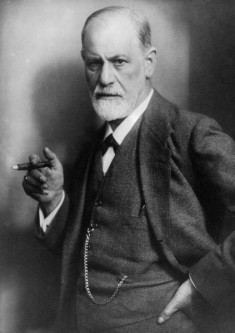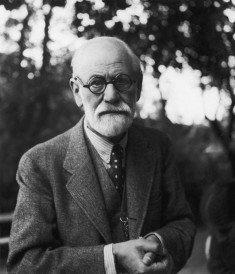| Sigmund Freud | |
|---|---|
 |
|
| Psychologist | |
| Born | May 6, 1856 Freiberg in Mähren, Moravia, Austrian Empire (now Příbor, Czech Republic) |
| Died | Sep. 23, 1939 (at age 83) London, England |
| Nationality | Austrian |
Sigmund Freud is one of the biggest names in the field of psychology. He is commonly known as the “father of psychoanalysis.”
Early Years
Freud was born in Frieberg on May 6, 1856, which was part of Austria at that time. He was born to a Jewish couple – Jacob and Amalia. Sigmund was the first of their eight kids. His parents were experiencing financial difficulty when he was born. When Sigmund was nearly three years old, his parents moved from Frieberg to Leipzig first, and then to Vienna.
During his early years, Sigmund’s parents taught him at home. In 1865, the nine-year old Sigmund got admission in to a prominent high school. He turned out to be an outstanding student and he graduated from Matura in 1873 with honors. Sigmund was proficient in several languages, including German, English, Italian, French, Spanish, Hebrew, Greek and Latin. Freud also loved reading William Shakespeare’s plays, which many believe, helped him in developing better understanding of human psychology.
Early Professional Years
After studying medicine from the University of Vienna, Freud worked as a physician and was successful at that. Sigmund started off his career at Vienna General Hospital. During the first three years, he worked in different departments of the hospital. He also worked with famous French neurologist Jean-Martin Charcot. During his work with the neurologist, Sigmund became fascinated with emotional disorder called hysteria.
Personal Life
In 1886, Sigmund married Martha Bernays, who was the granddaughter of the chief rabbi of Hamburg, Isaac Bernays. Sigmund and Martha had six children between 1887 and 1895. There were also unconfirmed rumors that Sigmund had romantic relationship with Martha’s sister, Minna Barneys.
Freud developed a habit of smoking at the age of 24. He started smoking cigarettes and then later on, he started smoking cigars. Sigmund believed that smoking helped in enhancing his capacity to work. Despite health warnings, he remained a smoker throughout his life. Unfortunately, he eventually died of mouth cancer in 1939. Sigmund had a long struggle with the cancer, signs of which were initially diagnosed in 1923. Sigmund had a painful time at the end and his doctor friend, Max Schur, convinced his daughter Anna to not keep him alive. They administered him doses of morphine which helped move along the process toward his death.
Work and Contributions
 Sigmund Freud’s major contributions to psychology were in the field psychoanalysis. His psychoanalytic model comprised of three main components: the structure of the personality, the defense mechanisms, and the stages of psychosexual development.
Sigmund Freud’s major contributions to psychology were in the field psychoanalysis. His psychoanalytic model comprised of three main components: the structure of the personality, the defense mechanisms, and the stages of psychosexual development.
His psychoanalytic theories were based on the belief that developmental changes occur because of the influence of emotions and internal drives on behavior. Through his theory, he explained how conscious and unconscious mind works. He emphasized on the unconscious determinants of the behavior and effect of early childhood experiences.
Freud categorizes aspects of mind into three parts- Id, Ego and Superego. The id represents our earliest way of relating to the world, an unselfconscious desiring fulfillment of our basic needs. The ego is concerned with the conscious, the rational, and the self-aware aspect of the mind. The superego ensures the moral codes of the ego, when the conscience struggles with the concepts of right and wrong.
Dream Theories
Sigmund Freud’s dream theory is based on the idea of repressed longing – the desires that we are unable to express in a social setting. His most famous work – The Interpretation of Dreams – revolutionized the study of dreams. He believed that analyzing dreams helps in understanding the different aspects of personality.
According to Freud, nothing you do occurs by chance. Every thought is motivated by your conscious as some level. Dreams are the way to express your repressed feelings (urges and impulses). The Interpretation of Dreams was released in 1899, bearing 1900 as printing date, as he wanted his greatest discovery to be associated with the beginning of new century.
Psychosexual Theory
Freud described children as going through multiple stages of sexual development. According to him, these stages are labeled as Oral, Anal, Phallic, Latency and Genital. In Freud’s view, each stage is focused on sexual activity and the pleasure received from a particular area of the body. His theories on sexual behavior provoked several controversies all over Europe. Some of his famous books on this and other matters include Three Essays on the Theory of Sexuality, The Future of an Illusion and others. Freud was awarded the 1930 prestigious Goethe Prize in Germany.